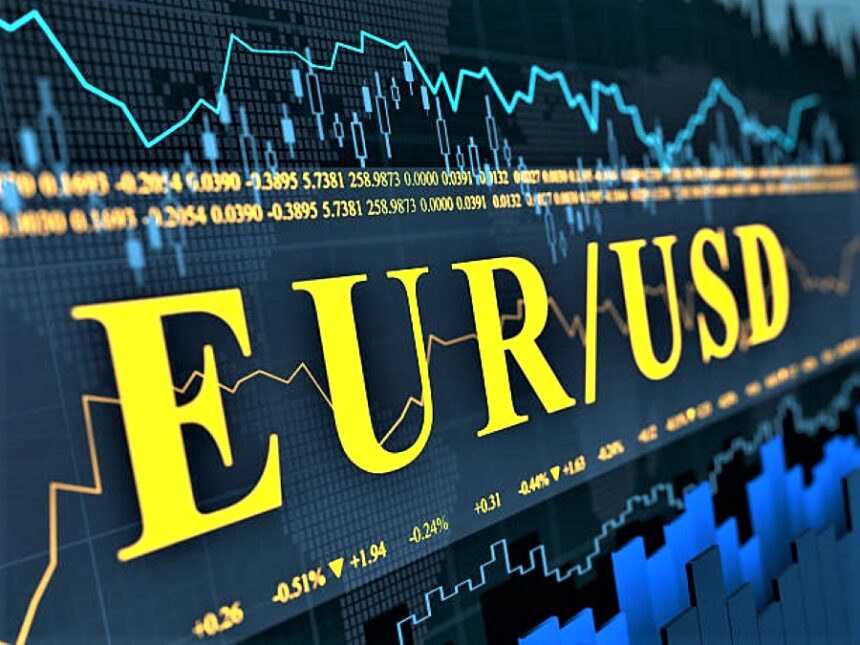EURUSD Slips Below 1.1300 as Fed Holds Steady and Signals Caution
The EURUSD currency pair drifted lower on Thursday, dipping below the psychologically significant 1.1300 level during the European session. The move came amid renewed US Dollar (USD) strength, triggered by the Federal Reserve’s clear message that it is in no rush to cut interest rates. This cautious tone from the Fed has led traders to re-evaluate expectations for monetary easing in the US, putting downward pressure on the Euro (EUR).
Fed Keeps Rates Steady for Third Consecutive Meeting
On Wednesday, the Federal Reserve maintained its benchmark interest rate in the 4.25% to 4.50% range for the third consecutive meeting, as expected. However, it was Fed Chair Jerome Powell’s accompanying remarks that caught investors’ attention. Powell emphasized rising uncertainty surrounding the economic outlook, particularly due to the latest wave of tariffs imposed by President Donald Trump’s administration.
“The risks to both inflation and unemployment now tilted to the upside,” Powell said during the post-meeting press conference. He underscored that the Fed needs to “await more clarity” before adjusting policy, a stance that effectively rules out immediate rate cuts.
Markets Price Out Near-Term Easing; July Cut Still in Play
Market participants have responded by scaling back expectations for a rate cut in the June policy meeting. According to the CME FedWatch Tool, the probability of a June rate cut has now dipped below 10%. However, traders are still assigning a 66% chance that borrowing costs will be lower by the July meeting, suggesting that one more round of data and geopolitical developments could tip the scales.
The US Dollar Index (DXY), which tracks the USD against a basket of six major currencies, edged higher to just below the 100.00 level following the Fed’s announcement. The index had been under pressure earlier this week, but Powell’s comments provided a fresh catalyst for Dollar bulls.
EUR Struggles Despite Broad Resilience
While the Euro has remained relatively strong against many of its peers, its performance against the US Dollar has faltered. The ECB’s dovish tilt has limited the upside potential for the common currency, especially as the Fed’s messaging grows more cautious.
Traders expect the European Central Bank to continue its easing cycle, with another rate cut likely at the June meeting. The ECB has expressed concerns about the economic outlook within the Eurozone, although it remains optimistic that inflation will return to the 2% target by year-end.
US President Trump to Unveil UK Trade Deal
Adding another layer of intrigue to global markets, US President Donald Trump is set to announce a bilateral trade deal on Thursday, with reports indicating that the United Kingdom will be the chosen partner. This development comes amid ongoing efforts by the Trump administration to reshape US trade relationships post-Brexit.
On Wednesday, Trump posted on his Truth.Social platform that his team had secured an agreement with a close trading partner, and that it would be revealed shortly. While speculation initially centered on India, South Korea, and Japan — as Trump had suggested in a recent television interview — sources from The New York Times confirm that the UK will take the lead.
Such a deal could be politically symbolic and economically significant, as it would mark the first major trade agreement of Trump’s current term, signaling a potential shift in US trade policy priorities.
Eyes on Crucial US-China Trade Talks in Switzerland
Despite the excitement surrounding a possible US-UK trade deal, global markets are more focused on the upcoming US-China trade talks scheduled for Saturday in Switzerland. US Treasury Secretary Scott Bessent and Trade Representative Jamieson Greer will meet with their Chinese counterparts in a high-stakes effort to de-escalate the long-running trade war.
A resolution — or even a framework for progress — could provide relief to markets rattled by tit-for-tat tariffs. However, with Trump’s tariffs still firmly in place and China yet to show major concessions, skepticism remains high.
EU Hits Back with Potential Tariff Rebalancing Measures
In a separate development, the European Union unveiled a consultation paper detailing possible countermeasures against US tariffs. The paper outlines retaliatory actions on up to €95 billion worth of American imports, a figure slightly below the €100 billion reported earlier by Bloomberg.
European Trade Commissioner Maros Sefcovic announced on Wednesday that official countermeasures would be revealed soon. “Tomorrow we will announce next preparatory steps, both in the area of possible rebalancing measures, and also in the areas important for the further discussions,” Sefcovic said, according to Reuters.
While the EU remains open to negotiation, officials made it clear that the bloc would not be pressured into an unfair agreement. “Our foremost priority remains a balanced trade relationship,” Sefcovic emphasized, “but not at any cost.”
Market Movers Summary: What’s Driving EURUSD Today
- Fed’s patience boosts USD: With the Fed holding rates steady and showing no urgency for cuts, the Greenback gained strength across the board.
- ECB’s dovish stance weighs on EUR: Expectations for a June rate cut by the ECB continue to cap gains in the Euro.
- US-UK trade deal adds to volatility: Reports of a surprise UK deal have added a political element to market sentiment.
- EU retaliatory measures in play: The EU’s readiness to respond to US tariffs could escalate tensions and affect risk appetite.
- US-China talks remain pivotal: Any progress or failure in upcoming trade negotiations could reshape short-term direction for major currencies.
Technical Analysis: EURUSD Vulnerable Below 1.1300
From a technical perspective, EURUSD has failed to hold above the 1.1300 level, a key psychological and resistance zone. A sustained move below this level could expose the pair to deeper downside risk, with the next support seen around 1.1240, followed by 1.1200.
On the upside, a break back above 1.1300 would be needed to spark short-term bullish momentum, with further resistance at 1.1340 and 1.1375. Momentum indicators on the 4-hour chart show waning bullish strength, supporting a cautious outlook in the near term.
Outlook: EURUSD Set for Choppy Trading Amid Policy Divergence
The near-term outlook for EURUSD remains clouded by diverging central bank policies and ongoing geopolitical uncertainties. As long as the Fed sticks to its cautious stance and the ECB remains on a dovish path, the bias in EURUSD may continue to lean lower.
However, any breakthroughs in trade talks — especially the US-China dialogue — or surprises from the Trump administration’s trade announcements could cause sharp swings. Traders advised to monitor macroeconomic releases and central bank commentary closely in the days ahead.
[faq-schema id=”39529″]









